
Easy Vegetable Chow Mein is a Chinese stir-fried noodle dish and a common Asian Takeout meal.
This chow mein with fresh veggies and perfectly cooked noodles is a very popular at home, and you can easily recreate it.

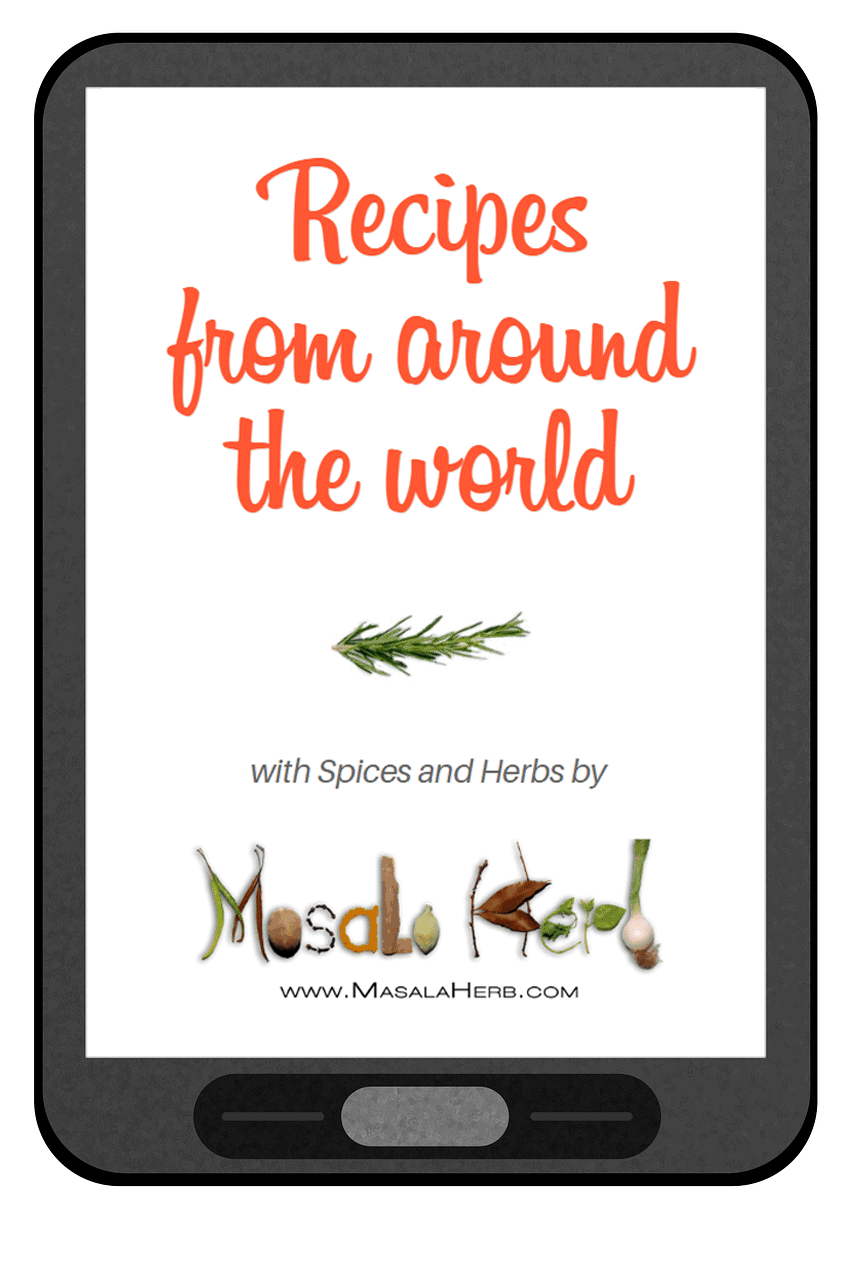
Global Food Recipes
with Spices and Herbs
Free E-Book available for a limited time. Grab yours now and get instantly inspired!
You missed out!
Jump to:
TL;DR
Chow mein is a quick dish to prepare at home, and it won’t take you more than 15 minutes of cooking time altogether.
There are countless Chow Mein versions in this world, this is my easy Vegetable Chow Mein take on this dish. Other versions include my chicken chow mein and shrimp chow mein.
The simple Chow Mein is prepared in a short time frame and the ingredients are cooked quickly.
The vegetable or protein is stir-fried first, then the semi-cooked noodles are added, and the sauce is poured over everything. Everything is then stir-fried without delay and served directly hot.
This recipe will come handy when you don’t know what to cook. And when you need something quick without much effort, while still enjoying premium flavors and real food!
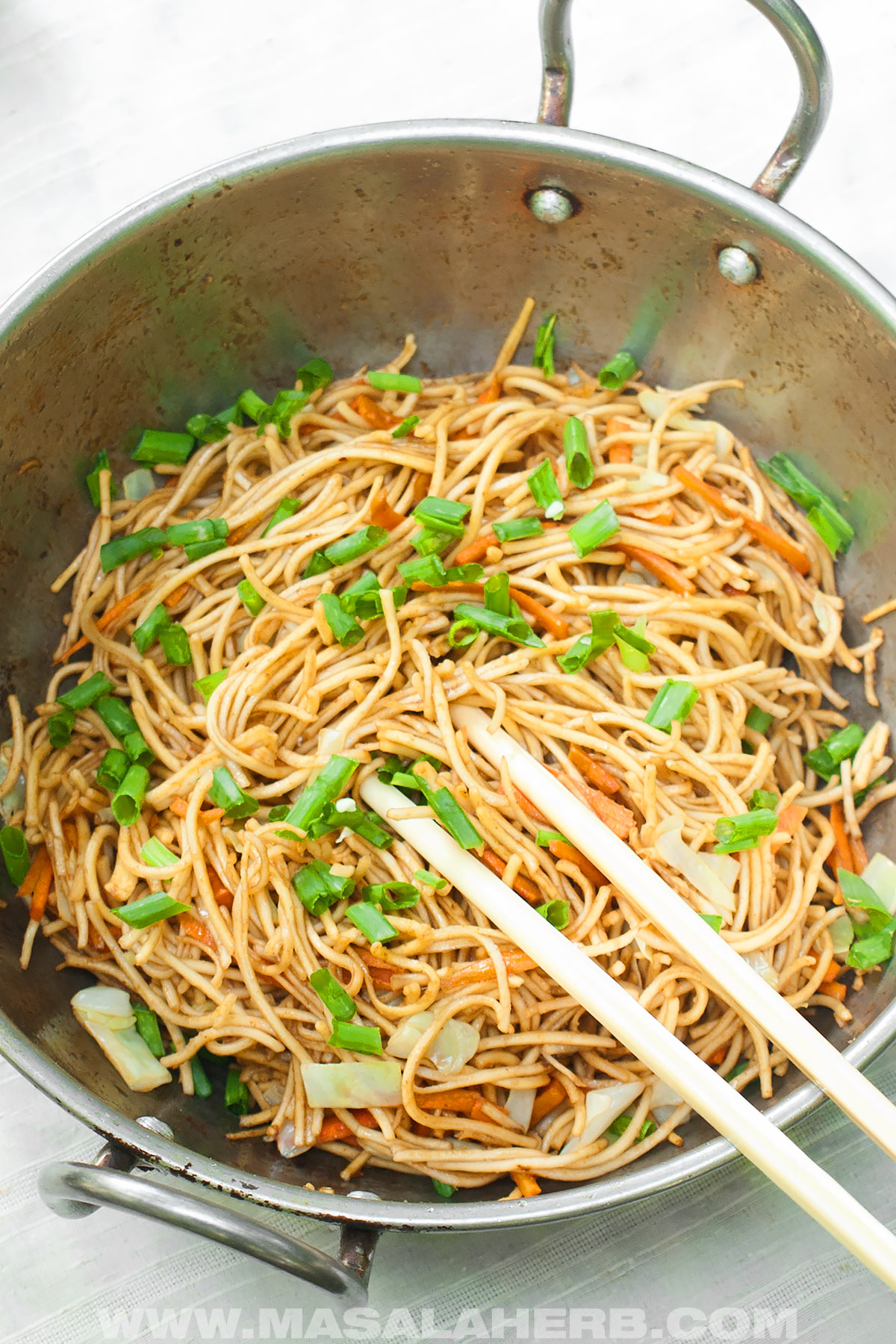
Ingredient Notes
For the Sauce:
- Soy Sauce — I like plain thin Kikkoman soy sauce, but also Thai mushroom soy sauce is nice. Just make sure it's a thin liquid soy sauce type and not a thick soy sauce variety.
- Rice Vinegar — or any other neutral flavored low percentage acidity vinegar.
- Chili Sauce — as in Sriracha Sauce or any other hot sauce that you like. It can be substitutes with Ketchup if you don't want heat.
- Sugar — I like brown sugar but normal sugar will do too.
To assemble the Dish:
- Lo Mein Noodles — Chinese or Asian long noodles. I prefer egg noodles.
- Oil — My favorite oil is peanut oil for the flavor, but you can use a sesame oil that can take high heat or a simple vegetable oil, if that's what you have at home. Try to get cold-pressed oils for the best quality and flavor experience.
- Ginger & Garlic — I use ginger garlic paste because it's the easiest and least complicated way to flavor a chow mein (homemade ginger garlic recipe). If you prefer fresh flavors, grind your ginger and garlic fine with a 1:2 ginger garlic ratio.
- Cabbage — If you want crunch, use regular white or green cabbage or else napa cabbage, which is more delicate.
- Carrot
- Green Onions — The bulbs and stalks are separate because the bulbs are stir-fried, while the stalks serve as a green, fresh topping.
The Chow Mein Sauce is prepared by simply mixing soy sauce, vinegar, chili sauce and sugar. Hence, the sauce is a bit hot but also tart and sweet.
This veg chow mein sauce is without fish or oyster sauce, and
Instructions
Step 1
Prep everything first before you start cooking.
That means, cut your vegetables small and mix the sauce ingredients for the stir-fry.
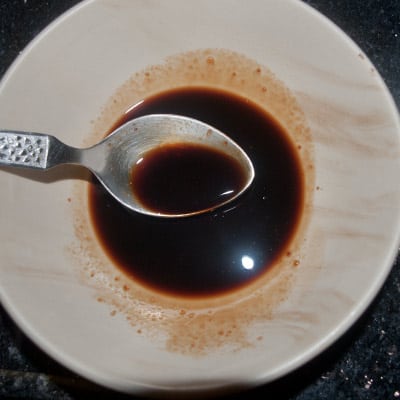
Step 2
Heat up a pot with water and cook your Asian noodles al dente, as per package instructions.
Heat up your wok or large pan with the oil and add in your ginger and garlic to stir cook quickly.
Add in your vegetables and stir cook for a minute or two on high heat.
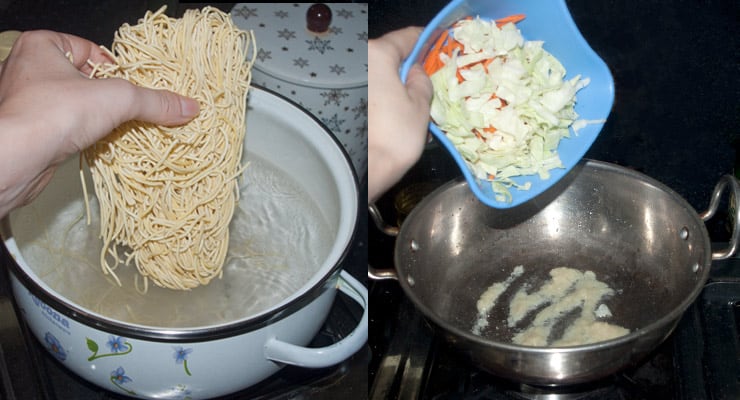
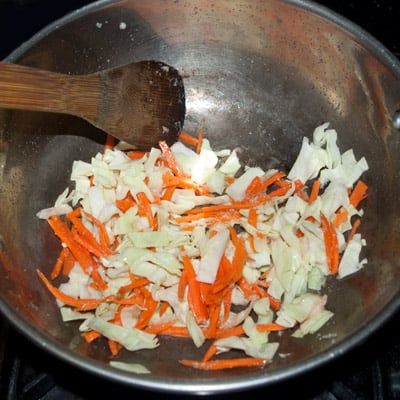
Step 3
Add your cooked noodles into the wok with the vegetables.
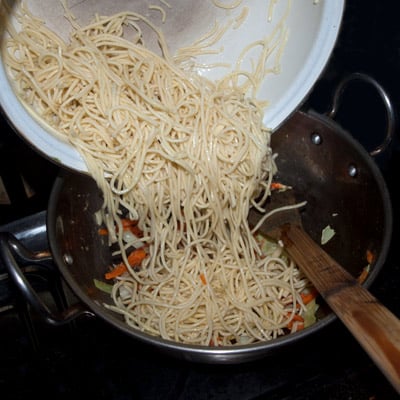
Pour the stir-fry sauce and some water (I like to use the noodle water) over the noodles.

Stir cook your chow mein over high heat for 2–3 minutes, so that the ingredients get mixed up, and the noodles get cooked further.
Serve directly hot and garnish with chopped green onion stalks.

📖 Recipe
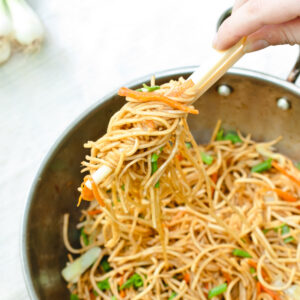
Vegetable Chow Mein Recipe
Ingredients
For the Sauce:
- 3 Tablespoons Soy Sauce
- 1 Tablespoon Rice Vinegar or White Wine Vinegar
- 2 Teaspoon Chili Sauce e.g., Sriracha
- ½ Tablespoon Sugar
For the Vegetable Chow Mein:
- ⅔ cup Carrot cut into matchsticks
- 1 cup Green Cabbage shredded
- 3 Green Onions
- 7 ounces Lo Mein Noodles
- 2 Tablespoons Oil
- 1 Tablespoon Ginger + Garlic *see Notes
- 2 Tablespoon Water
Instructions
- Prepare the stir fry sauce. Mix the soy sauce, vinegar, chili sauce, and sugar together. Keep aside.3 Tablespoons Soy Sauce, 1 Tablespoon Rice Vinegar, 2 Teaspoon Chili Sauce, ½ Tablespoon Sugar
- Prepare your veggies, shred cabbage, cut carrots into matchsticks, separate green onion bulb from the stalks. Slice onion bulb and stalks but keep them separate.⅔ cup Carrot, 1 cup Green Cabbage, 3 Green Onions
- Grab a pot and fill it with water to cook the noodles. Let it boil and then add all the noodles. Get a timer and time it at 3 minutes (or prepare according to packet instructions). We need to cook the noodles half way, or they will get mushy while stir-frying.7 ounces Lo Mein Noodles
- Place your wok or large pan over a low fire and add the oil and stir-fry your Ginger and Garlic and sliced onion bulbs shortly.2 Tablespoons Oil, 1 Tablespoon Ginger + Garlic
- Then add the shredded cabbage and carrot and stir-fry on high heat for 1–2 minutes so that the ingredients get slightly soft.
- Now stir in the cooked noodles.
- Pour the previously prepared sauce and 2 tablespoons of water, over the noodles. Stir-fry and mix the whole content for 2 minutes on high heat, or until all the ingredients are slightly soft (don't overcook!). The content should not stick to the wok.2 Tablespoon Water
- Finish by topping the noodles with the sliced green onion stalks and serve hot directly.
Notes
- Use fresh Ginger and Garlic chopped fine (⅔ garlic and ⅓ ginger ratio) or Ginger Garlic Paste (convenient and mixes in easily).
- You can try this recipe with more or other vegetables. See vegetable ingredient suggestion in the post, above this recipe card.
- You can also break in an egg right after stir frying the vegetables by making some space in the pan and pushing vegetables to the border. The egg is then cooked on high heat for a minute and then you just need to break the egg into pieces and you can continue to sitr cook and add the remaining ingredients.
Equipment
- Small Mixing Bowl to prepare the sauce
- Wok or Large deep Skillet
- 2 Wooden Cooking Spoon or Spatula
Nutrition
More Vegetable Ideas
I always end up using the same ingredients in my vegetable chow mein, which is carrot, spring onion, and cabbage.
This is because I like it that way the most and besides, I always have these ingredients at home.
You can add the following ingredients as well if you want to add more flavor or veggies:
- Red Cabbage
- Broccoli or Broccolini
- Mung bean sprouts
- Celery stalks
- Mushroom (technically not a vegetable)
- Bok Choy
- Spinach

Serving and Storing
Enjoy your stir-fried Asian noodles hot. You can keep leftovers in the fridge for up to 7 days.
I like to make a larger batch to fill up my meal prepping containers for the week. The noodles can be easily reheated in the microwave.
If you reheat them in the oven, be aware that they will get a bit crispy. Or take them back to a large deep skillet or wok to reheat. If it's too dry, add a tablespoon of oil.
More Asian Noodle Meals


